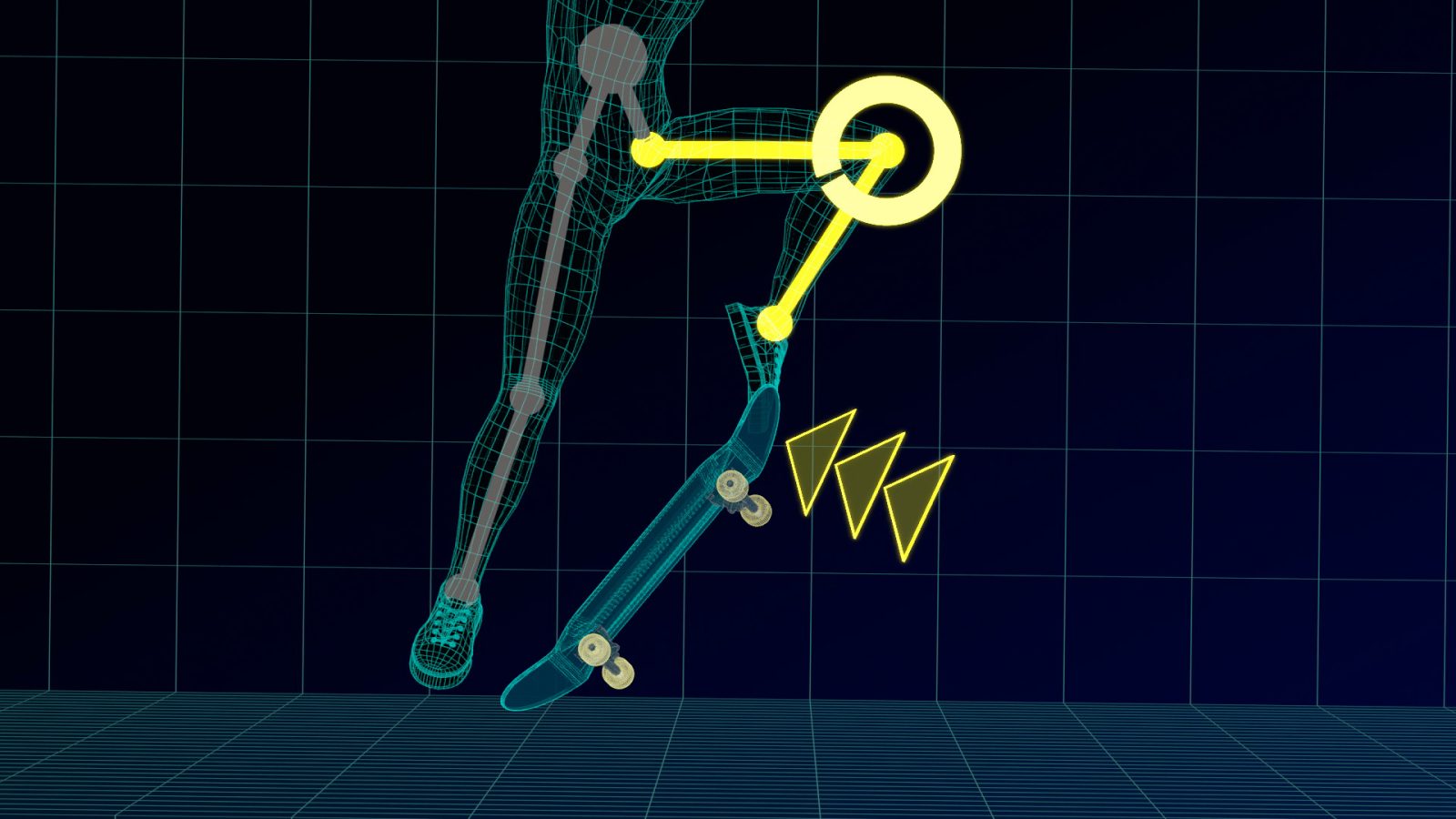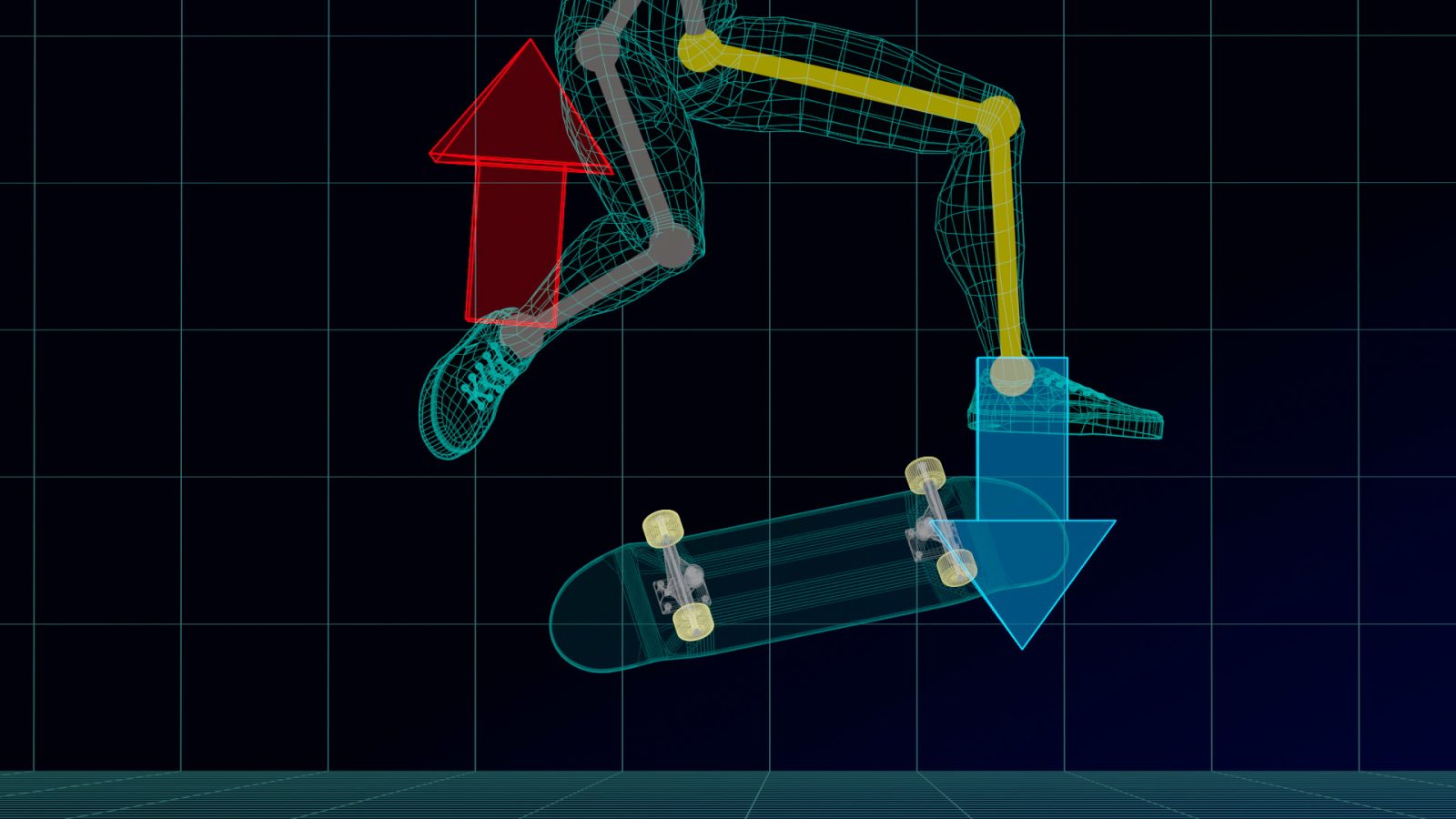If you actually were flicking down, it is obvious that your front foot reaches the ground first by flicking down. But you are not, are you? You are flicking more forward. The strange thing is, even though you are consciously flicking forward, you somehow can't keep your front foot above the board. In fact, under certain conditions, even if you flick forward, the front foot can still be forced downward.
Summary
Failure Reason: Extending the Front Leg Sends the Foot Downward
If you extend your leg to push down the nose, the front knee and the front foot moves downward. Once this momentum is generated, you won't be able to keep your front foot above the board.
Key Fix: Keep the Knee Fixed and Swing the Lower Leg to Control the Flick
The essential technique is fixing your knee in place while flicking. Even if you try to flick forward, the board pushes back against your foot, often forcing it down unless the knee stays locked. By swinging only the lower leg in an arc, you transfer enough force to flip the board while keeping your foot above it.
Practice Method: Try Flicking the Board While Getting Off
To train the flicking motion, pop the tail, lift the front knee, and pull the foot closer to your center of mass THEN flick it to the side while stepping off the board. Keep the knee fixed while swinging the foot sideways. Adjust knee height to match pop power. This builds consistency and helps you land Kickflips with control.
Introducing All in One Analyzer
An AI-powered motion analyzing tool that features body parts tracking, 2D to 3D video conversion, frame by frame playback and more!
Key Concept
The most important thing is to keep your knee in place when flicking. Take a look at my Kickflip. If you pay attention to my knee, you'll notice that it barely moves during the flick. Instead, the lower leg swings out from the knee as its pivot.
Step by Step Breakdown
1. Pop the tail and lift the front knee.
2. The nose rises and pushes back against your front foot.
3. From this position, when you flick, your foot swings in an arc around the knee and transfers rotation to the board.
The point is that the knee must not move. If you extend your leg during the flick, the knee drops, and you can no longer keep your front foot above the board. Kicking down with the entire leg might generate more energy than simply swinging the lower leg. However, when you combine the concept of fixing the knee with the principle I explained in the previous video—that swinging the lower leg makes the toe dip first before rising upward—you can transmit enough force to flip the board.
Practice Method
After popping the tail, just like in a real Kickflip, let the nose push your front foot back so that it gets closer to your body. If you flick while your foot is too far away, the force becomes parallel to the board's axis and won't generate a flip. Always pull it close to your center of mass.
Keep your knee fixed in one place and swing out your front foot. The direction of flick is vital. Open your front knee and flick the nose sideways while stepping off the board.
And if your knee is too high or too low, it won't work. Adjust the height of your front knee to match the power of your pop.
Also, with "All-in-One AI Motion Analyzer", you can visualize the position of your knee, so make use of that!
Common Mistake
In contrast, you can't flick very effectively without fixing your knee. If you try to generate rotational force on the board without fixing the knee, you end up extending the leg and kicking the board downward. As a result, while the tip of the foot moves forward, the knee and the entire leg are forcibly pushed downward. Once this force occurs, it is very difficult to counteract, and the front foot ends up touching the ground first.
And the disadvantages of not fixing the knee don't end there. If you keep your knee fixed, the force of the nose to rise pushes back against your lower leg.

However, if you try to flick by extending your entire leg, you won't be able to bend your knee, and that same upward force from the nose ends up pushing your whole body. As a result, the distance between your body and the board increases, and even if you manage to flip it, you end up shooting it forward instead of keeping it under you.
Additionally, the sudden downward push of the front foot triggers a reaction that lifts the back foot. To check whether you fall into this problem, see if your front knee drops during the flick. I recommend practicing flicking with the knee fixed in the air and getting used to the feeling of flipping the board properly.

